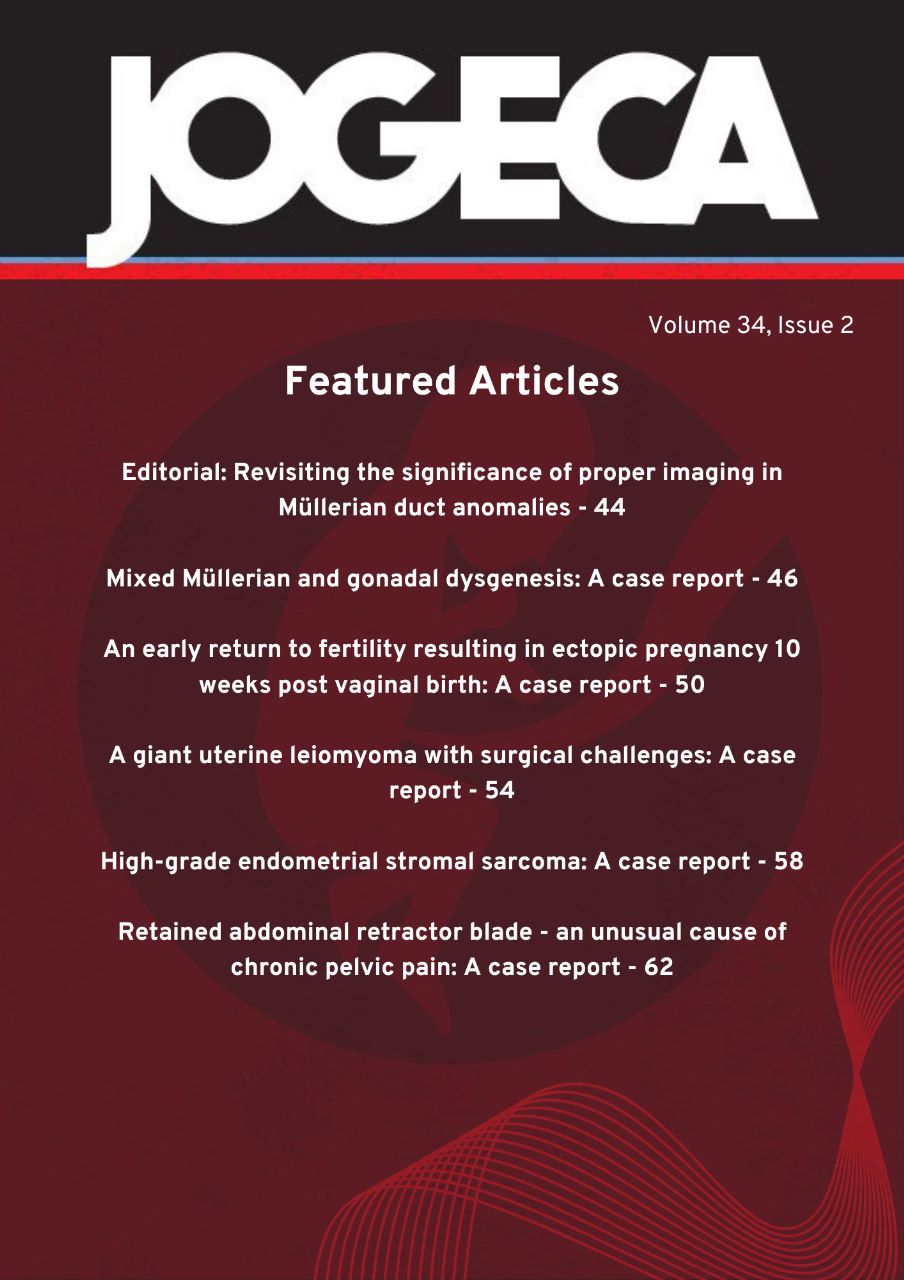A snapshot of the landscape of endometrial cancer in Kenya: Implications of recent updates in pathological classification
DOI:
https://doi.org/10.59692/jogeca.v36i1.136Keywords:
Endometrial cancer, Kenya, Pathologic subtypes, Clinical outcomesAbstract
Background: The incidence of endometrial carcinoma is rising worldwide, partly due to the rising
prevalence of obesity. From a diagnostic pathology perspective, it is a heterogeneous disease with a
varied range of histomorphological features and is prone to poor interobserver reproducibility. This often
has downstream effects on treatment protocols and patient outcomes. The current WHO Classification of
Tumors of the Female Genital Tract recommends the incorporation of histology, immunohistochemistry,
and molecular testing where possible in the classification of endometrial carcinoma into clinically relevant
subtypes. In Kenya, access to ancillary testing is limited and prohibitively expensive, negatively affecting
accurate tumor classification. In addition, there are limited local data on the various histologic subtypes of
endometrial carcinoma and their respective clinical outcomes.
Objectives: To review the classification of endometrial carcinoma as defined by the current WHO
Classification contextualized with local clinical, demographic, pathology, and outcome data from two
tertiary referral centers in Kenya.
Methods: Formalin-fixed paraffin-embedded blocks (FFPE) of 123 cases of endometrial carcinomas
between 2012 and 2020 were retrieved from the Aga Khan University and Moi Teaching and Referral
Hospitals. The clinical history and follow-up data were abstracted. Hematoxylin and eosin sections were
reviewed and 11 immunohistochemical markers (MLH1, MSH2, MSH6, PMS2, ER, PR, ARID1A, P16,
PTEN, napsin A, and p53) were determined, and analyzed to arrive at a consensus diagnosis.
Results: Six endometrial carcinoma subtypes: endometrioid (68 cases, 55%), serous (32 cases, 26%),
carcinosarcoma (15 cases, 12%), clear cell (5 cases, 4%), mixed carcinoma (2 cases, 1.5%), and
dedifferentiated carcinoma (1 case, <1%) were reported. The median age of presentation was 63 years
(range of 34-90 years) and the median body mass index (BMI) was 27.4 kg/m2. Staging data were
available in 95 cases, of which 64 (67%) were in the early stage at presentation. Follow-up data were
available in 70 patients with a median follow-up time of 18 months. Recurrences were reported in 11
cases, 5 of which were of the serous subtype. Of the 26 patients whose status was known at the time of
the conclusion of the study, 7 died of the disease.
Conclusion: To our knowledge, this is the first comprehensive review of the clinical and pathological
profiles of various subtypes of endometrial cancer in Kenya with follow-up and outcome data using a
wide array of immunohistochemical markers for accurate classification as per the WHO classification.
Downloads
Published
How to Cite
Issue
Section
Categories
License
Copyright (c) 2024 The Authors.

This work is licensed under a Creative Commons Attribution 4.0 International License.




